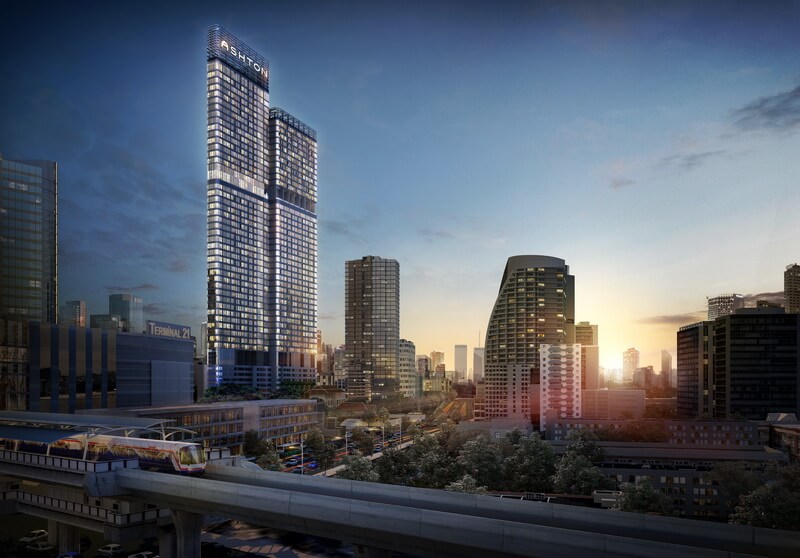After wading through flooded roads and getting stuck in heavy traffic congestion over the past two weeks, Bangkok residents have started to question City Hall’s flood drainage capacity.
The city’s flooding was triggered by heavier-than-usual rainfall.
The focus of the criticism is the multi-billion baht Rama IX-Ramkhamhaeng giant tunnel and six other water drainage facilities under the Bangkok Metropolitan Administration’s (BMA) supervision.
The ruling Pheu Thai government was quick to catch on to public sentiment and has demanded the BMA prove that the much-publicised giant tunnel is still up and running.
“We have received a number of complaint from city residents asking our party to inspect the giant tunnel and other drainage tunnels to see if they are able to drain floodwater as [the BMA] claims,” Pheu Thai spokesman Prompong Nopparit told a news conference on Sept 16.
Taxpayers are wondering if the BMA’s mega tunnels are the worst possible investment to alleviate flooding, he said.
Mr Prompong said the party had sent an inspection team to monitor the giant tunnel, but City Hall officials denied them access.
A total of seven tunnels have been built to improve the capital’s drainage capacity. They are the 2.3-billion-baht Rama IX-Ramkhamhaeng tunnel and six smaller underground tunnels, which have a combined distance of about 14km and cost 3.2 billion baht.
The six smaller water-drainage tunnels, which were built between 1983 and 2007, are the Sukhumvit Soi 26 tunnel; Khlong Prem Prachakorn tunnel; Phaya Thai tunnel; Sukhumvit Soi 36 tunnel; Sukhumvit Soi 42 tunnel; and Bung Makkasan tunnel.
Bangkok Governor MR Sukhumbhand Paribatra presided over the opening ceremony of the Rama IX-Ramkhamhaeng giant tunnel on Feb 15 last year. Though the giant tunnel project was not his brainchild, construction of it was completed during his term.
During the opening ceremony, the Bangkok governor apparently felt proud of the underground tunnel, which he said could efficiently solve the flooding in parts of Bangkok.
The capital’s largest ever water-drainage tunnel, it should drain water very quickly.
With the gigantic tunnel, floodwaters could be drained faster than before, the governor said.
However, MR Sukhumbhand noted that the Rama IX-Ramkhamhaeng tunnel alone could not solve the flooding in all areas of Bangkok. The flooding situation will improve if three more giant tunnels are built.
Following the heavy criticism over the BMA’s handling of the rain-triggered flooding in the city, the Bangkok Post talked to Sanya Cheenimit, director of the BMA’s drainage and sewerage department, about the controversial Rama IX-Ramkhamhaeng tunnel and the efficiency of the city’s drainage system.
Mr Sanya said the 5.1km giant tunnel, which is 5m in diameter, can drain water at a rate of 60 cubic metres per second. Construction of the tunnel took five years.
Mr Sanya said the tunnel project was launched as Bangkok’s normal drainage channels such as waterways and canals could not be expanded because houses and communities had blocked waterways.
Construction of the tunnels, which serve as a “floodwater expressway”, did not need land expropriation because they were built underground, he said.
The water drainage chief, however, stressed that Bangkok’s drainage network was designed to deal with rainfall, not run-off from other provinces.
When it rains, rainwater will flow into drainage pipes connecting to secondary canals before flowing into main canals. The water will then flow to water pump stations and later to drainage tunnels which will drain into the Chao Phraya River, he explained.
He said Bangkok’s sewers were designed to deal with only 60 millimetres of rainfall per hour. To better control the flow of floodwater, the city’s drainage network such as main, secondary and small canals must be improved.
Sluice gates must be built at those canals in order to control the flow of water before it is drained to drainage tunnels, he said.
Unless improvements were made, water would flow in different directions, causing flooding in communities, he added.
MR Sukhumbhand said the Rama IX-Ramkhamhaeng tunnel, which received water from Khlong Lat Phrao and Khlong Saen Saeb, would drain floodwater in Bung Kum, Huai Khwang, Lat Phrao, Wang Thong Lang, Bang Kapi, Chatuchak, Min Buri, Bang Sue, Saphan Sung and Kannayao districts to the Chao Phraya River.
He affirmed that all of the four water pumps at the tunnel were working well. However, only three of the four pumps are operating because the amount of water was still below the level where all were needed.
“I assure those who cast doubt on the efficiency of the giant tunnel that this tunnel is operating at its fullest capacity. But this one tunnel cannot drain flooding in all Bangkok areas as it was designed to cover a distance of about 50 square kilometres, while Bangkok covers more than 1,600 square kilometres,” said MR Sukhumbhand.
The BMA plans to build three more tunnels at Khlong Bang Sue, Bung Nong Bon and Don Muang to drain floodwaters into the Chao Phraya River. The tunnel network, if developed, could efficiently solve the flooding in the capital, he said.
Source: http://www.bangkokpost.com/news/local/314612/it-all-down-the-drain



